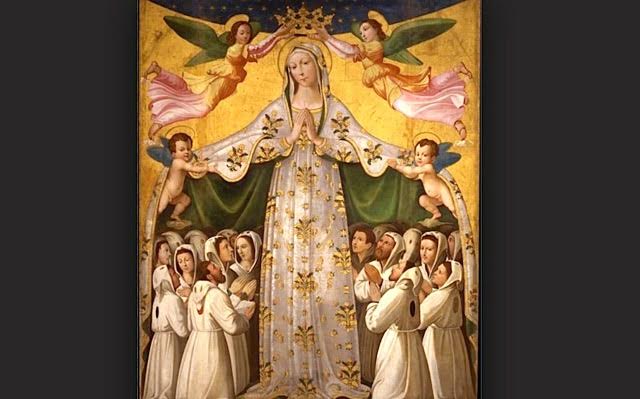From May 31 to November 27, 2016, Rome’s Capitoline Museums are housing an exhibition titled “Mercy in Art: Jubilee Itinerary among the Masterpieces of Great Italian Artists,” organized by the European Center for Tourism and Culture, on the occasion of the Jubilee proclaimed by the Holy Father, with the sponsorship of the Ministry of Goods and of Cultural Activities and Tourism.
The subject of mercy, which in fact is at the heart of Christian thought, has been the object of many works of art, from paintings to sculptures, from miniatures to incisions, which, on one hand, represent Our Lady of Mercy, namely the Virgin who gathers the Christian people under her mantle, as a mother that protects, defends and helps her children and, on the other, the Works of Corporal Mercy, which Christ enunciated (Saint Matthew’s Gospel 25:35-36) and which a good Christian must carry out.
Therefore, the exhibit displays several artistic testimonies dedicated to the subject of Mercy, subdividing the display in two sections:
Our Lady of Mercy
The name Mater Misericordiae is very ancient; it goes back, probably, to the 5th and 6th centuries, when she was so addressed in a sermon of writer Giacomo di Sarug. The iconography — in which the Virgin appears standing with a large mantle, under which she gathers the People of God — originated in Tuscany and in Lazio in the High Middle Ages and spread widely between the 14th and 15th centuries. The most famous work on this subject is the Polyptych of Mercy of Piero della Francesca, which is in the Borgo San Sepolcro, but many have been the artists that have portrayed her, from Simone Martini to Lippo Memmi, from Bartolomeo Caporali to Pietro Perugino. Also today, in a recent homily, Pope Francis invited to reflection on a medieval icon of the Virgin, Our Lady of Mercy, and to prayer “in these times of spiritual turbulence, hatred and persecution,” in which she defends and helps us.
In this section, a small nucleus of paintings testifies to the great diffusion the subject had, and pointed out among them is a painting of Nioccolo Alunno, from the Pinacoteca Comunale of Assisi, a table from the end of the 15th century of the Diocesan Museum of Orte, a canvass of Jacopo Zanguidi said Il Bertoja of the National Gallery of Parma.
The Seven Works of Corporal Mercy
The Works of Mercy are described for the first time by Christ Himself in Saint Matthew’s Gospel; they were soon codified in a list. Developed in the Christian conscience, in fact, was the sense of the importance of the practical translation of the love of God, which is externalized in love for the other. However, it was probably only in the 12th century that the list of the seven works of mercy was established, the six mentioned by Saint Matthew (clothe the naked, feed the hungry, give drink to the thirsty, lodge pilgrims, visit the sick, visit the imprisoned) and bury the dead.
The most famous and exemplifying work on the subject of mercy is the painting that Caravaggio created for the Pio Monte della Misericordia at Naples in 1606-1607, known as the Seven Works of Mercy. In reality, the exact title of the work, as shown by documents, is Our Lady of Mercy. Thus, in one of his stroke of genius, Caravaggio joins the iconography of Our Lady of Mercy with that of the Seven Works of Mercy, in a symbolic dialogue between the Virgin and the merciful people.
Presented here are paintings and sculptures that illustrate the different works of mercy, among which is pointed out a bas-relief of Pietro Bernini of the National Museum of San Martino, Guido Reni’s Charity and a painting of Pierre Subleyras of the Museum of Rome.
Given the delicacy and the importance of the works, the two great masterpieces of Piero della Francesca and of Caravaggio are documented through didactical panels.
The curators of the Exhibition are Maria Grazia Bernardini and Mario Lolli Ghetti, with the Scientific Committee constituted by Claudio Parisi Presicce, Daniela Porro, Claudia Cieri Via, Anna Maria Guiducci, Rita Silvestrelli, Marco Bussagli and presided over by Archbishop Jean-Louis Brugues, Librarian and Archivist of the Holy Roman Church.

Madonna della Misericordia - Vincenzo Tamagni (pd)
FEATURE: Mercy in Art: Jubilee Itinerary Among Masterpieces of Great Italian Artists
Rome, Musei Capitolini, Palazzo dei Conservatori, May 31-Nov. 27


